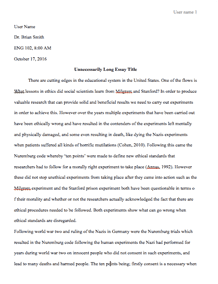There are problems in tracking the appointments of patients, the records on drugs usage, the tracking of radiology orders and the management of patient data in cases where hospitals still use the manual recording procedures of these necessities. As such, the hospital should be encouraged to use the Electronic Medical Register platform to be able to monitor these activities, and due to this, there should be a cost-benefit analysis of the software (Plowman, 2013).
Purchasing the software will be having costs associated with the process. The institution should obtain the Electrical Medical Register for $8000 with an additional $1000 each year for its renewal. The equipment's useful life is eight years, but the clients are advised to have a consistent maintenance that will cost around $1500 each year. Support is necessary since it will ensure that the platform security is in good shape with the bugs here and there removed. The institution should conduct training for their staff which will cost around $200 for each employee in the department. The cost of training will be including a lunch and traveling costs for employees which will add up to $60. The institution should also purchase two desktops and a printer which will cost $500.
There are also non-monetary costs associated with the implementation of the project. The training of staff will take some time, and as a result, the employees would not perform their duties on time. As such, the costs associated with that time will add up to $1000. Some employees will during the first periods of usage of the computer incur costs of at least $800 due to material errors. There are times that the system will malfunction due to electronic issues and therefore, the costs incurred will be around $500. Other contingent non-monetary costs will be around $1000.
The table below shows the total identified costs consisting of monetary costs and non-monetary costs:
ELECTRONIC MEDICAL REGISTER
IDENTIFIED COSTS
MONETARY COSTS AMOUNT
Purchase of software $8,000.00
Renewal of the Software $1,000.00
Maintenance Cost $1,500.00
Training $260.00
2 desktops and Printer $500.00
Non-Monetary Costs
Time lost $1,000.00
Errors of usage $800.00
Malfunction of the system $500.00
contingent cost $1,000.00
Total Costs $14,560.00
Therefore, from above, the conclusion is that the total cost will be $14650.
A balanced scorecard is a system that is used for the purposes of strategic planning and management which is employed in various business, industries, governments and non-governmental organizations for the purposes of streamlining the operations of such businesses and industries to achieve the overall goals. As a result, they help in ensuring that the goals and strategies of organizations are fulfilled and there is an improvement of both internal and external communication to help in monitoring organizations.
The four key elements of balanced scorecards are such customers, internal processes, financial, and learning and growth. The customer perspective focuses on the performance targets as they relate to the clients in the market, it deals with the growth of customers and the target services in addition to the market share and branding objectives. The perspectives of internal processes, on the other hand deal with the operational goals and specifically that main processes required for the delivery of the customer objectives. Third, the financial perspective of balanced and scorecard deals with the revenue and profit targets of commercial companies and in relation to targets that help in saving costs for the non-profit organizations. Finally, the learning and growth perspective deals with three main components; the human capital, information capital, and organizational capital.
Balanced scorecards are used in two main ways; to manage performance in companies and government organizations and to set strategic goals for the delivery of the set objectives. Through the use of the scorecards, companies and government organizations have the ease of delivering the goals of the organizations and ensuring that organizations become successful. In this regard, the balanced scorecards help in the improving efficiency of processes, educating and motivating employees, enhancing information systems, monitoring progress, providing greater customer satisfaction and increasing financial usage.
Advantages of balanced scorecards are such as they help in balancing efforts put in a company and ensuring holistic development of companies, they also check where an organization is meeting its objectives. Finally, balanced scorecards help in making corrections by making suggestions in companies. The limitations of the same are such that they take forethought and requires time to implement and to be effective, secondly, they do not give a complete overview of all operations of companies and cannot be used as the bigger strategies for organizations. Finally, the balanced scorecards employ the use of metrics that are not applicable on their own and there, is therefore, the need to have information applicable to company needs.
Reference
Plowman, N. (2013). Writing a cost benefit analysis. Bright Hub-The Hub For Bright.
Request Removal
If you are the original author of this essay and no longer wish to have it published on the customtermpaperwriting.org website, please click below to request its removal:




